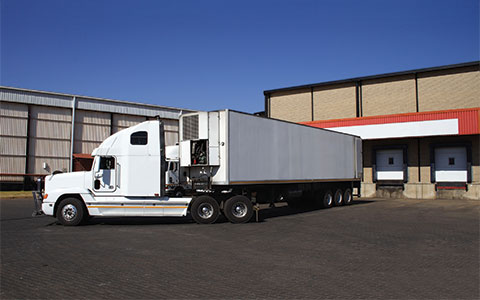Safety on the Road Starts in the Garage


There are many reasons to have a good vehicle inspection and maintenance program. From an efficiency standpoint, neglecting routine maintenance can increase your costs when minor problems lead to breakdowns, expensive roadside repairs and poor customer service. It can also lead to vehicle violations, fines and a poor safety record. These problems all have the potential to undermine your business and cost you money.
Beyond these headaches is the most important reason to make sure your inspection and maintenance program meets high standards: Safety. Even the most mundane maintenance issues - a tire with low air pressure, a turn signal that isn’t working or an oil leak - have the potential to lead to an accident.
Northland’s claim experience points to several common maintenance issues that can lead to accidents. Reduce your risk of accidents by making sure your inspection and maintenance program places a priority on these components.
- Brakes. Brakes are a vehicle’s most important safety feature, so there’s good reason why so much emphasis is placed on brake condition during roadside inspections and accident reconstruction work. When they are working properly, brakes help prevent accidents by bringing vehicles to a quick, controlled stop. A vehicle with poorly functioning brakes is more difficult to control and takes longer to stop, increasing both the likelihood and the severity of an accident. A vehicle’s brake system should, at a minimum, be inspected as required by federal and state motor carrier safety regulations. This includes daily pre-trip inspections, frequent inspections by a mechanic during scheduled preventive maintenance and during required periodic inspections.
- Lights and reflectors. Lights and reflectors make your vehicle visible to others and communicate your intentions. When they are not working properly, you run the risk of others not seeing you or not understanding that you are braking or turning. In both instances, serious accidents can occur.
Since 1993 newly manufactured trailers were required to have reflective striping along the sides and rear of the trailer. Retrofitting pre-1993 trailers became a requirement in 2001. These improvements have helped prevent many trailer under-ride accidents. Today, many older trailers have reflective striping that is either worn or missing. Replace worn reflective striping in order to make your vehicle visible to other motorists at night. - Tires. The two main safety problems associated with tires are blowouts and fires. Tire experts stress the need to make sure tires are properly inflated. Under inflation can cause tire damage, which can result in sudden tire failure. If this occurs in a steering tire, you could lose control of your vehicle. If it’s a drive axle or trailer tire, the debris can create a hazard for motorists behind you. Under inflated tires can also build up enough heat to ignite and burn. Tire fires are difficult to extinguish, so they can quickly spread to the rest of your vehicle and cargo. To help avoid these hazards, make sure to inspect your tires carefully for proper inflation or damage.
Tire experts advise that the only effective way to check tire pressure is by using a tire pressure gauge. Thumping tires with a hammer or kicking them will not help you determine when they are underinflated. Tire pressure monitoring and automatic inflation systems can also help ensure that tires remain at the right pressure.
Another potential problem is wheel separation due to loose or missing lug nuts. Even though lug nuts might appear to be tight, they may not be. Once they are loose, vibration over time can cause wheel studs to fail. Check lug nuts periodically to make sure they are tightened to the proper torque specification to avoid this type of failure. - Wheel bearings and axles. Bearing and axle failures can lead to wheel separation accidents and fires. The main reason for this type of failure is lack of lubrication. Without lubrication the bearings and axle overheat, potentially causing the wheel assembly to separate from the vehicle. When wheel separations occur near other motorists, the potential for a serious accident is high. To avoid these dangers, careful attention should be given to making sure wheel hubs and axles are lubricated. Leaking wheel seals should be repaired immediately.
- Electrical. Many truck fires result from electrical shorts in the cab, sleeper, or engine compartment. This points to a need to watch for loose, worn or chafed wiring and to ensure all electrical repairs are completed by trained, experienced technicians. An overloaded circuit, caused by too many electrical accessories, is another potential source of electrical fires. Circuits and wiring in some vehicles may not be designed to accommodate multiple accessories, such as televisions, refrigerators, and microwave ovens. Improper installation or poorly planned modifications can result in electrical shorts that can cause fires. At the very least, they can result in electrical problems that are difficult to locate and costly to repair.
In addition to the potential safety concerns outlined here, poor inspection and maintenance procedures can be a significant source of liability for you and your company. If your vehicle is involved in a serious accident, and the vehicle has not been properly maintained, you and your company could be held responsible—or potentially negligent—even if inadequate maintenance was not directly to blame for the loss.
Doc#: LCT802




